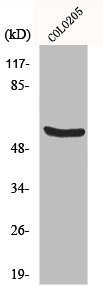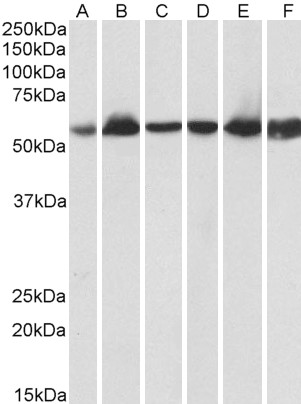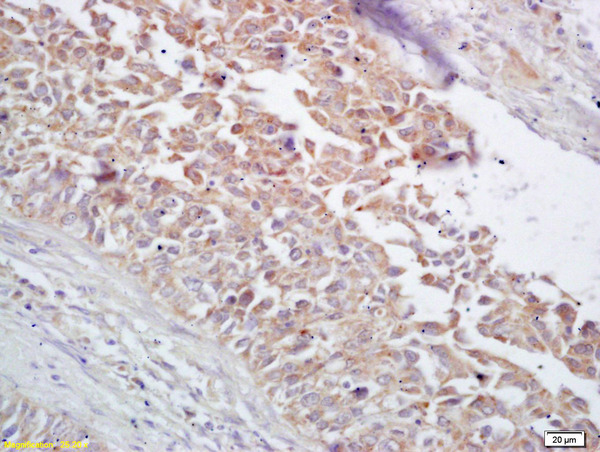HSPD1 / HSP60 Antibody (clone SPM253)
LS-C390360
ApplicationsFlow Cytometry, ImmunoFluorescence, Western Blot, ImmunoHistoChemistry, ImmunoHistoChemistry Paraffin
Product group Antibodies
TargetHSPD1
Overview
- SupplierLifeSpan BioSciences
- Product NameHSPD1 / HSP60 Antibody (clone SPM253)
- Delivery Days Customer23
- Application Supplier NoteRecognizes a 60kDa protein, identified as the heat shock protein 60 (Hsp60). Its epitope is localized between amino acids 383-447 of human Hsp60. A wide variety of environmental and pathophysiological stressful conditions trigger the synthesis of a family of proteins known as heat shock proteins (hsps), more appropriately called as stress response proteins (srps). Hsp60 is a potential antigen in a number of autoimmune diseases. In human arthritis and in experimentally induced arthritis in animals, disease development coincides with the development of immune reactivity directed against not only bacterial Hsp60, but also against its mammalian homolog. Optimal dilution of the anti-HSP60 antibody should be determined by the researcher. Staining of formalin-fixed tissues requires boiling tissue sections in 10mM Citrate buffer, pH 6.0, for 10-20 min followed by cooling at RT for 20 min.. Flo (0.5 - 1 µg/10E6 cells), IF (0.5 - 1 µg/ml), IHC, IHC-P (0.5 - 1 µg/ml), WB (0.25 - 0.5 µg/ml) Recognizes a 60kDa protein, identified as the heat shock protein 60 (Hsp60). Its epitope is localized between amino acids 383-447 of human Hsp60. A wide variety of environmental and pathophysiological stressful conditions trigger the synthesis of a family of proteins known as heat shock proteins (hsps), more appropriately called as stress response proteins (srps). Hsp60 is a potential antigen in a number of autoimmune diseases. In human arthritis and in experimentally induced arthritis in animals, disease development coincides with the development of immune reactivity directed against not only bacterial Hsp60, but also against its mammalian homolog. Optimal dilution of the anti-HSP60 antibody should be determined by the researcher. Staining of formalin-fixed tissues requires boiling tissue sections in 10mM Citrate buffer, pH 6.0, for 10-20 min followed by cooling at RT for 20 min.
- ApplicationsFlow Cytometry, ImmunoFluorescence, Western Blot, ImmunoHistoChemistry, ImmunoHistoChemistry Paraffin
- CertificationResearch Use Only
- ClonalityMonoclonal
- Clone IDSPM253
- Concentration0.2 mg/ml
- ConjugateUnconjugated
- Estimated Purity...
- Gene ID3329
- Target nameHSPD1
- Target descriptionheat shock protein family D (Hsp60) member 1
- Target synonymsCPN60, GROEL, HLD4, HSP-60, HSP60, HSP65, HuCHA60, SPG13, 60 kDa heat shock protein, mitochondrial, 60 kDa chaperonin, P60 lymphocyte protein, chaperonin 60, epididymis secretory sperm binding protein, heat shock 60kDa protein 1 (chaperonin), heat shock protein 65, heat shock protein family D member 1, mitochondrial matrix protein P1, short heat shock protein 60 Hsp60s1
- HostMouse
- IsotypeIgG1
- Storage Instruction2°C to 8°C
- UNSPSC12352203








